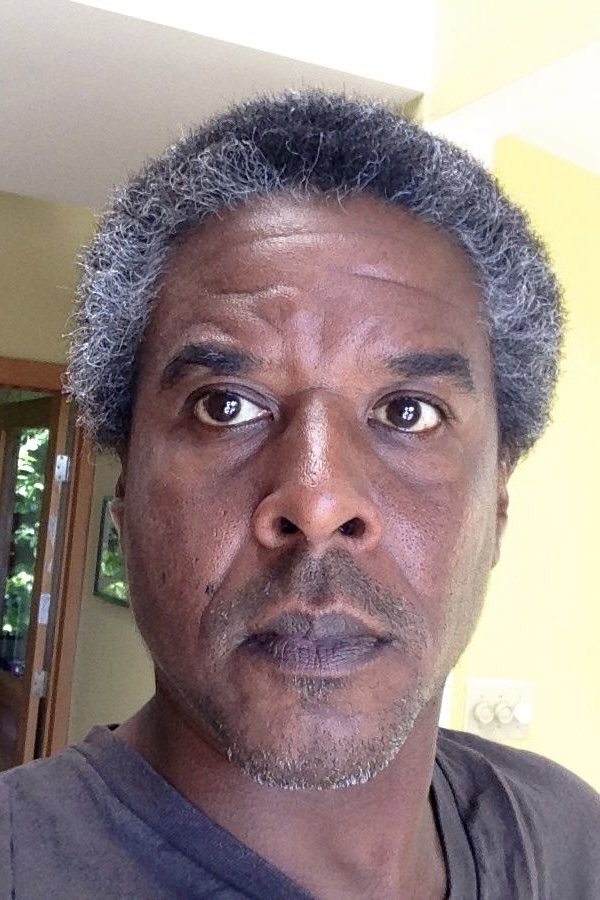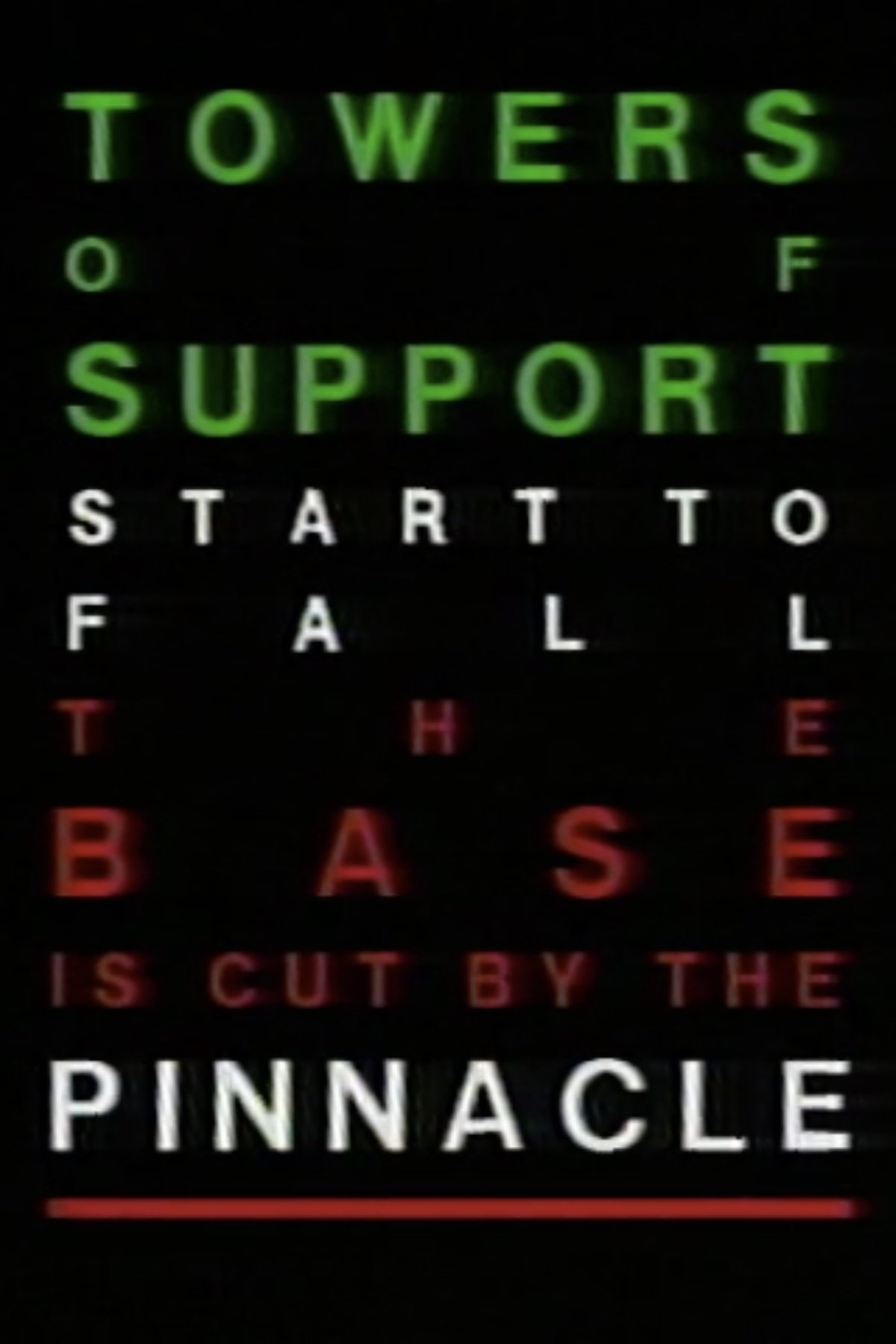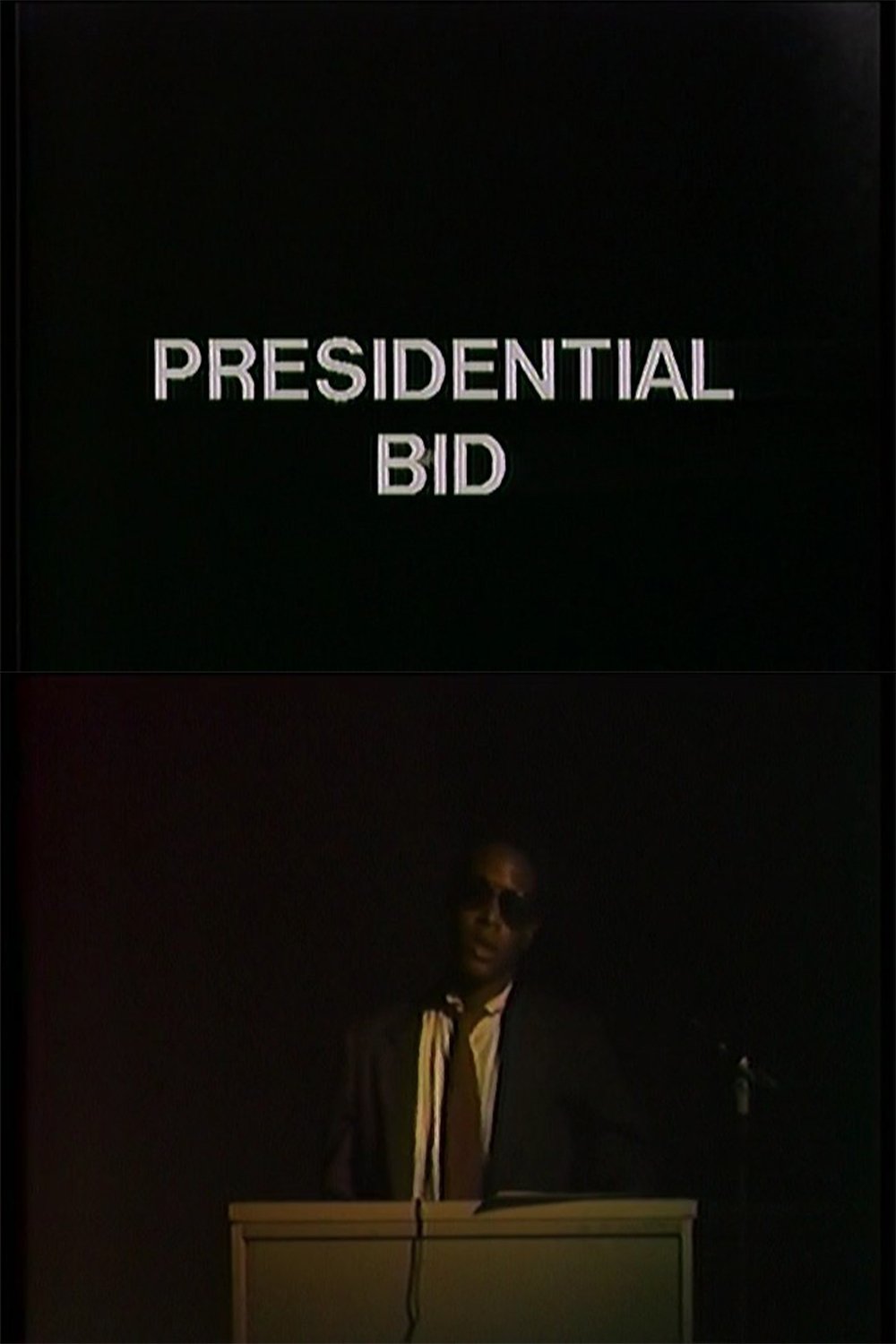

Andrews asks us to form a mental picture of our birth, while text onscreen "aids" us in this process.

A work of often visceral power, 'An I For An I' is a dynamic cultural statement on the internalization of racism and violence. Andrews assails the cause and effect of institutionalized and mass media exploitation, which he states is "directed at and produced by our culture, attacking the mind and the body." Bold images—a fist punching a stomach, a knife slapping an outstretched palm—convey the impact of what he terms "fighting not to become what we are fighting against." The recurring image and sound of the abdomen being punched are ultimately replaced by Andrews' fist hitting his own hand. In one sequence, he builds an explosive collage of cinematic and media violence, from the mindless warfare of Rambo to blaxploitation and pornography films.

With "Presidential Bid" Andrews asks questions about how power is acquired, and how this relates to class and race in the United States during the late 1980s. It asks these questions indirectly, as everything the artist actually says in the video is a statement. The conceptual and political energy of the piece exists between these firm statements and implied questions.
The video works of San Francisco-based artist Lawrence Andrews explore cultural and mass media constructions of history and identity. Compelling in their energy and tension, unflinching in their political and social critique, Andrews' collage-like video essays are discursive inquiries into the ideological and economic functions of culture. In Andrews' works, violence, exploitation, and racism are seen in relation to media representation, art-making and art history, institutions, social systems, and cultural difference. In the powerful 'An I For An I' (1987), for example, he represents the causes and effects of racism and violence within the contexts of the cultural and the personal. Andrews' works reveal a bold, fresh approach to strategies of appropriation and multi-textuality. Employing a fragmented, disjunctive structure that is by turns visceral and didactic, narrative and formalist, he constructs associative pastiches of on-screen text, original material, and found film and television footage. Often seen as a dynamic physical presence in his tapes, Andrews speaks through his work in an assertive and original voice. He states, "Art can be a force for change no matter what the level of production. Culture is all we are as people; we speak about it, look at ourselves through it, and ultimately change because of it." Andrews was born in 1964. The 1989 recipient of a Fulbright Grant in Amsterdam, he studied photography at the Corcoran School of Art in Washington, D.C. and received a B.F.A. from the San Francisco Art Institute. Winner of the San Francisco Museum of Art's SECA Video Invitational, he has also received awards from the National Endowment for the Arts, Long Beach Museum's Open Channels, Film Arts Foundation, and the Rockefeller Intercultural Documentary Fellowship. His work has been exhibited at numerous festivals and institutions, including the Bonn Videonale, Germany; San Francisco Museum of Art; Berlin Film Festival; Los Angeles Contemporary Exhibitions; American Film Institute National Video Festival, Los Angeles; Brooklyn Museum of Art, New York, and Rene Coelho Gallery, Amsterdam. Andrews currently lives and works in San Francisco where he has been an instructor at the San Francisco Art Institute.
By browsing this website, you accept our cookies policy.